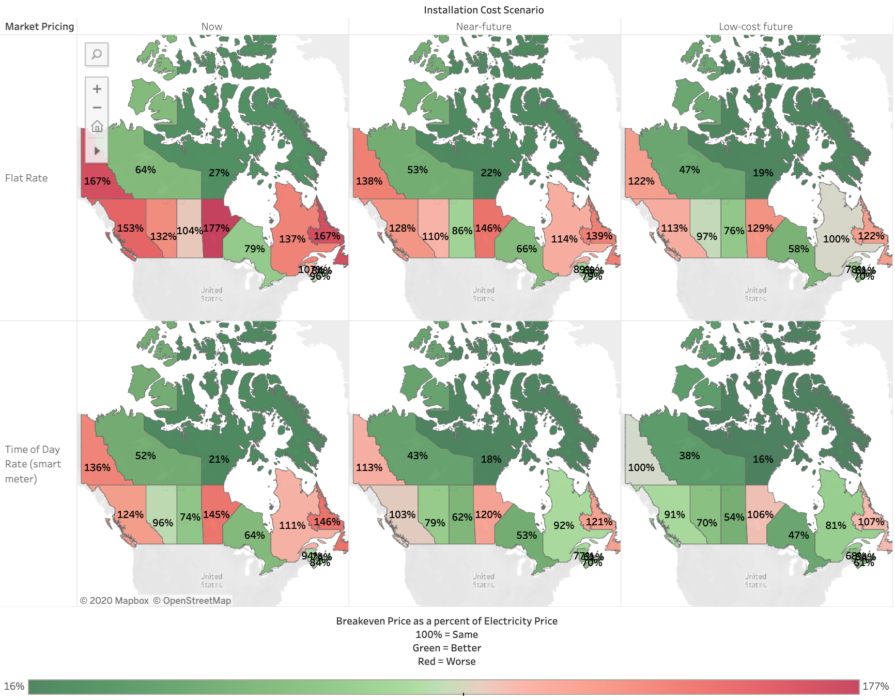Rooftop Solar: Pathways to Decarbonization and Electrification
Canada has made clear its commitment to decarbonization. Last month, the Canadian government set a $9.1 billion 2030 Emissions Reduction Plan to assist the country in meeting its carbon reduction goals, with deep reductions in the oil-and-gas sector. This is in the wake of many new policies and an ambitious country-wide net zero emissions goal by 2050.
The Role of Solar in the Zero Carbon Building Standard
In light of the recent Carbon Tax being ruled constitutional and the Federal Budget’s $17.6 Billion dollar allocation towards the Green Recovery Plan, there is a great incentive for commercial real estate owners and architects to design and operate Zero Carbon Buildings. Since 2016, the Canada Green Building Council (CaGBC) has worked to champion the move to lower-carbon commercial, institutional and high-rise residential buildings in support of Canada’s efforts to mitigate the effects of climate change.
Agrivoltaics: Integrating Solar and Agriculture is a Win-Win
Agrivoltaics is the co-development of agriculture and solar photovoltaics within the same land space. Ground mounted solar projects are commonly built in rural farmlands due to the abundance of relatively flat land. In fact, constructing solar panels on less than 1% of the world’s cropland is enough to generate electricity for the entire planet.
Economics of Solar Power in Canada
The Canada Energy Regulator (formerly the National Energy Board), published a report on the Economics of Solar Power in Canada (ESPC)[1] studying the financial viability of typical solar power projects in over 20,000 Canadian communities. While we’ve spoken quite a bit about the rapid drop in solar costs of the past 10 years, this report helps to give context not only to how far solar has come, but what we can expect in the near future. In many provinces across Canada, it is now cheaper to use solar compared to power from the grid.
Bifacial Solar Panels Offer Lowest Levelized Cost of Energy for Solar
Bifacial PV is currently a hot trend in solar. While bifacial panels are still more expensive than traditional monofacial panels, they offer a significant increase to energy production in the right circumstances. This means a quicker payback and a lower Levelized Cost of Energy (LCOE) for the solar project. In fact, a recent study conducted by Joule shows that bifacial-1T installations (meaning a bifacial solar array mounted on a single-axis tracker) increase energy yield by 35% and reach the lowest levelized cost of electricity (LCOE) for the majority of the world (93.1% of the land area).[1] These numbers are likely to improve as production costs continue trending downward and new efficiencies in the technology are discovered.
Solar PV Today: Increased Lifetime & Decreased Operating Expenses
The Lawrence Berkeley National Laboratory recently published a paper on Solar PV project life and Operating Expense trends (you can read the paper here) drawing on the findings from a 2019 survey of U.S. solar project developers, sponsors, financiers, and consultants. There were two major takeaways of the study: over the last decade the average Solar PV assumed useful life has increased to 30+ years, and operating expenses have decreased by 50%.
This will obviously have a significant positive impact on the economics of solar going forward. This new landmark will bring down the Levelized Cost of Energy (LCOE) for Solar and is exciting for those who have already, or are looking to adopt solar into their energy plan. Read More
How To Size a Solar Net Metering System For Your Business
You have made the decision to go solar. You want to reduce your costs, become more energy independent and reduce your carbon footprint. You have an available roof space, field, or parking area (i.e. solar canopy) that can be used to host your solar net metering system. Now you need to determine what is the right size for your solar system. This blog will walk you through the most important considerations when determining how to design a correctly-sized solar system that will optimize your investment.
Everything you wanted to know about Solar in Commercial Real Estate… But were too afraid to ask!
In February 2020, Compass Energy Consulting’s President, Jonathan Cheszes, delivered a presentation to Triovest Realty Advisors Inc. entitled “Everything You Wanted to Know About Solar PV in Commercial Real Estate… But were too afraid to ask!”
Farm Credit Canada Supports Renewable Energy
Are you a farmer or do you work in agriculture? Do you own your land and buildings? Are you looking to generate additional income?
How is Accelerated Depreciation Lowering the Cost of Solar Net Metering?
This is part of a series of blogs looking at the economics of solar power in Canada today. You can read our blog “What Caused Solar Costs to Fall 99%?” to learn more.
Today we will focus on the impact of accelerated depreciation and how it affects the paybacks and economics for solar generation. While capital costs play an important role in the economics of investing in solar power, the cost of electricity, as well as how much sun your system receives, are also both important factors in calculating the payback and return on investment for your solar generator.
However, one facet of solar’s increasingly improved economics that is often overlooked is the tax treatment of investments in solar. In particular, Accelerated Depreciation can greatly improve your case for solar, especially in the first year.










